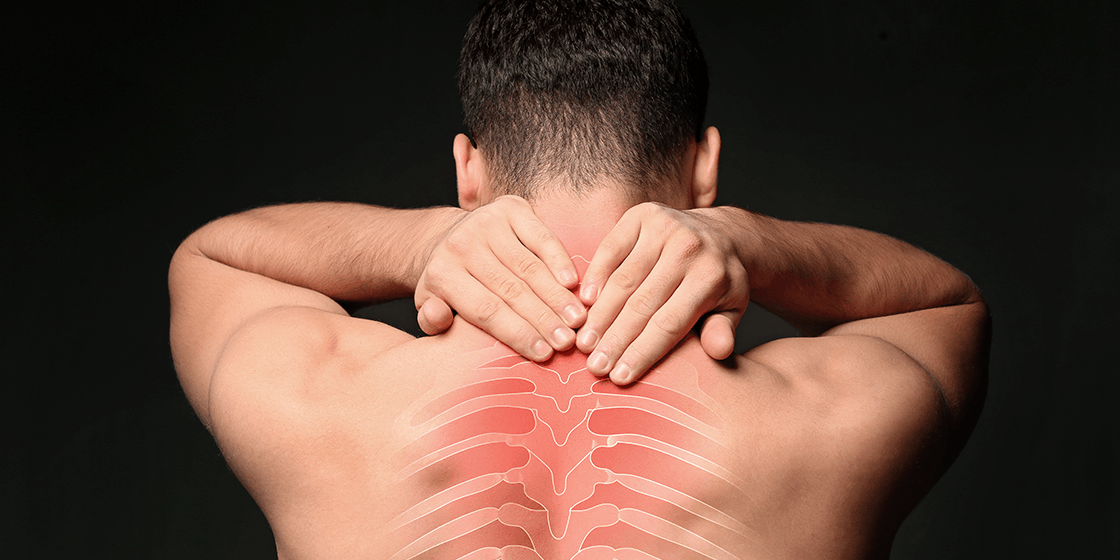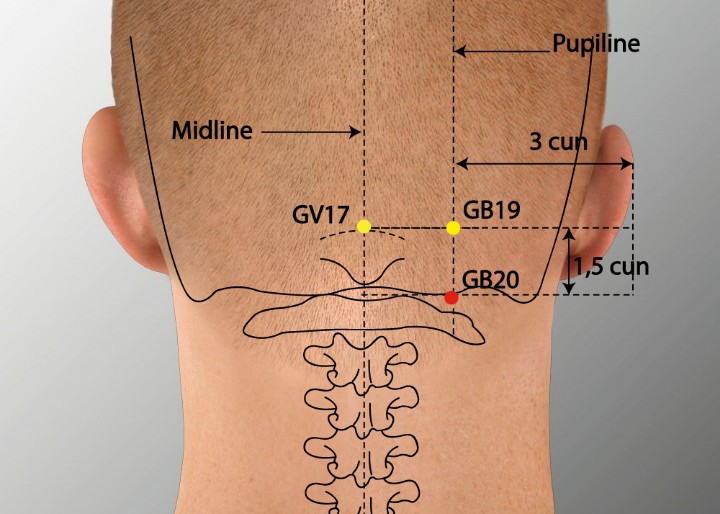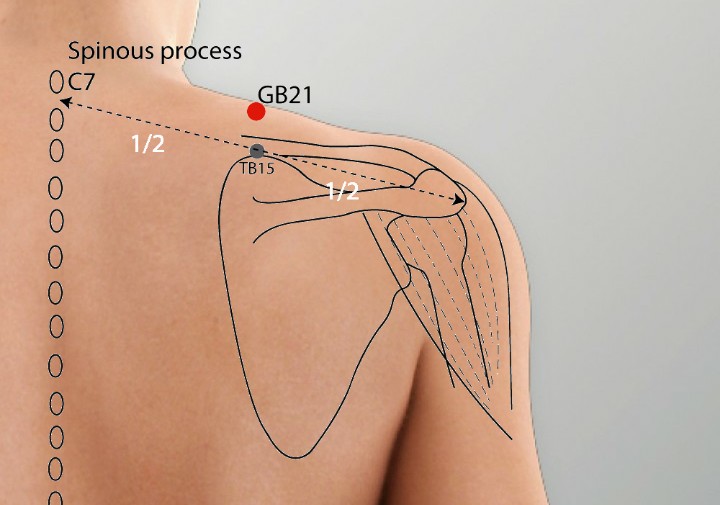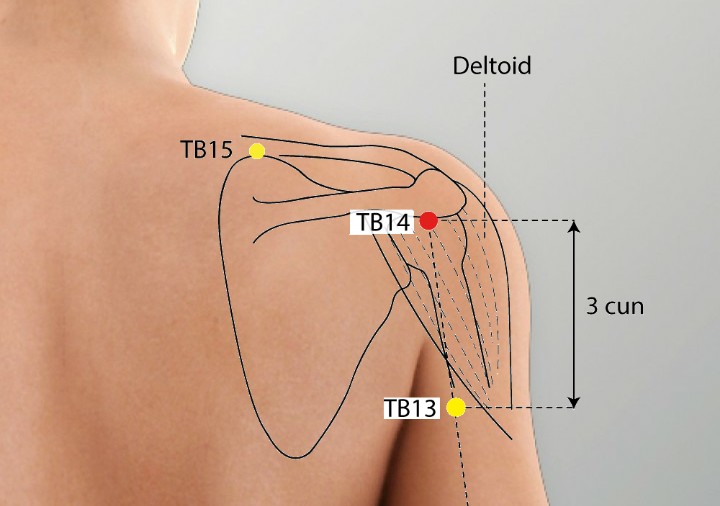Acupuncture for Cervical Facet Joint Pain: A Comprehensive Guide
Cervical facet joint pain is a common cause of chronic neck pain, affecting millions of people worldwide. Originating from the facet joints in the cervical spine, this condition can significantly impair daily activities, from turning the head to maintaining proper posture. Traditional treatments, such as medications, physical therapy, or injections, often provide partial relief, leading many to explore complementary therapies like acupuncture. Rooted in Traditional Oriental Medicine (TOM), acupuncture has gained traction as an effective approach for managing chronic pain, including cervical facet joint pain. This article delves into the definition of cervical facet joint pain, its impact, the effectiveness of acupuncture, and the key acupoints used in treatment.
- What is Cervical Facet Joint Pain?
- Causes of Cervical Facet Joint Pain
- Prevalence and Impact
- Understanding Cervical Facet Joint Pain
- Characteristics of Cervical Facet Joint Pain
- Impact on Quality of Life
- Acupuncture: An Overview
- Effectiveness of Acupuncture for Cervical Facet Joint Pain
- Scientific Evidence
- Mechanisms of Action
- Limitations of Current Research
- Key Acupoints for Treating Cervical Facet Joint Pain
- Benefits of Acupuncture Beyond Pain Relief
- Considerations Before Starting Acupuncture
- Integrating Acupuncture with Lifestyle Changes
- Conclusion
What is Cervical Facet Joint Pain?
The cervical spine, comprising the seven vertebrae (C1–C7) in the neck, contains facet joints (also called zygapophyseal joints) that connect adjacent vertebrae. These small, synovial joints facilitate movement and stability in the neck. Cervical facet joint pain occurs when these joints become inflamed, irritated, or degenerated, leading to localized or referred pain.
Maybe You Need:
Key characteristics of cervical facet joint pain include:
- Localized Neck Pain: Pain is typically felt in the neck, often on one side, and may worsen with specific movements, such as turning or tilting the head.
- Referred Pain: Pain may radiate to the shoulders, upper back, or base of the skull, sometimes mimicking other conditions like migraines or shoulder issues.
- Stiffness: Reduced range of motion in the neck, making it difficult to perform tasks like driving or looking over the shoulder.
- Tenderness: The affected facet joints may be tender to touch, particularly over the cervical spine.
- Aggravation by Posture: Prolonged sitting, poor posture, or hyperextension of the neck (e.g., looking up) can exacerbate symptoms.

Causes of Cervical Facet Joint Pain
Cervical facet joint pain can arise from various factors, including:
- Degenerative Changes: Osteoarthritis or wear-and-tear degeneration of the facet joints, common with aging, can lead to cartilage breakdown and inflammation.
- Trauma: Whiplash injuries, often from car accidents or sports, can strain or injure the facet joints.
- Poor Posture: Prolonged forward head posture, common in desk workers or smartphone users, places stress on the cervical facet joints.
- Repetitive Strain: Activities involving repetitive neck movements, such as painting ceilings or certain sports, can irritate the joints.
- Inflammatory Conditions: Conditions like rheumatoid arthritis may inflame the facet joints, contributing to pain.
Prevalence and Impact
Cervical facet joint pain is a significant contributor to chronic neck pain, accounting for up to 55% of cases in some studies. It affects people of all ages but is more common in adults over 40 due to degenerative changes. The condition can lead to reduced mobility, sleep disturbances, and emotional distress, as chronic pain often contributes to anxiety or depression. Conventional treatments, such as nonsteroidal anti-inflammatory drugs (NSAIDs), corticosteroid injections, or physical therapy, may not provide lasting relief for all patients, prompting interest in acupuncture as a complementary approach.

Understanding Cervical Facet Joint Pain
Cervical facet joint pain is distinct from other types of neck pain, such as muscle strain or disc-related issues, due to its origin in the facet joints. Below, we explore the nature of this pain, its symptoms, and its impact on daily life.
Characteristics of Cervical Facet Joint Pain
Localized and Referred Pain:
- The pain is often described as a deep, aching sensation in the neck, sometimes with a burning or sharp quality during movement.
- Referred pain may extend to the shoulders, upper back, or occipital region (base of the skull), leading to headaches or shoulder stiffness.
- Unlike radicular pain (e.g., from a herniated disc), facet joint pain does not typically cause numbness, tingling, or weakness in the arms.
Movement-Related Pain:
- Pain is often exacerbated by specific neck movements, such as extension (looking up), rotation, or lateral bending.
- Rest may provide temporary relief, but prolonged immobility can lead to stiffness.
Associated Symptoms:
- Headaches: Cervicogenic headaches, originating from the cervical spine, are common, particularly when the upper facet joints (C1–C3) are affected.
- Muscle Spasms: Surrounding muscles may tighten in response to joint irritation, contributing to stiffness and discomfort.
- Crepitus: Some patients report a grinding or clicking sensation in the neck during movement.
Impact on Quality of Life
Cervical facet joint pain can significantly disrupt daily life. Common challenges include:
- Reduced Mobility: Difficulty turning the head can impair activities like driving, working, or exercising.
- Work Limitations: Desk jobs or physically demanding roles may become challenging due to pain and stiffness.
- Sleep Disturbances: Pain may worsen at night, particularly when lying in certain positions, leading to unrefreshing sleep.
- Emotional Toll: Chronic pain can contribute to frustration, anxiety, or depression, especially when symptoms persist despite treatment.
Conventional treatments, such as NSAIDs, muscle relaxants, or facet joint injections, may provide temporary relief but often fail to address the underlying dysfunction or chronic nature of the pain. This has led many patients to explore acupuncture, which offers a holistic and minimally invasive approach.

Acupuncture: An Overview
Acupuncture, a cornerstone of Traditional Oriental Medicine, involves inserting thin, sterile needles into specific points on the body, known as acupoints, to restore balance and alleviate symptoms. In TOM, pain is viewed as a result of blocked or imbalanced vital energy flow along meridians. Acupuncture aims to unblock these pathways, promoting healing and pain relief.
In Western medicine, acupuncture is thought to work through several mechanisms:
- Neurotransmitter Release: Stimulates the release of endorphins and other pain-relieving chemicals.
- Nervous System Modulation: Influences pain signals in the spinal cord and brain, reducing pain perception.
- Improved Blood Flow: Enhances circulation to affected areas, reducing inflammation and promoting tissue repair.
- Muscle Relaxation: Reduces muscle tension and spasms, which often accompany facet joint pain.
Acupuncture is widely recognized as a safe and effective therapy for chronic pain conditions, including neck pain, and is increasingly integrated into multidisciplinary pain management programs.
Effectiveness of Acupuncture for Cervical Facet Joint Pain
A growing body of research supports acupuncture’s effectiveness for cervical facet joint pain and related neck pain conditions. Below, we explore the evidence, mechanisms, and benefits of acupuncture for this condition.
Scientific Evidence
Pain Reduction:
A 2018 systematic review in Pain Medicine analyzed randomized controlled trials (RCTs) on acupuncture for chronic neck pain, including facet joint-related pain. The review found that acupuncture significantly reduced pain intensity compared to sham acupuncture or no treatment.
A 2020 study in The Journal of Pain reported that acupuncture, particularly when combined with electroacupuncture, provided significant relief for cervical spine pain, with effects lasting up to 12 weeks post-treatment.
Patients often report immediate pain relief after sessions, with cumulative benefits over 6–12 weeks of treatment.
Improved Range of Motion:
Acupuncture has been shown to reduce neck stiffness and improve cervical range of motion. A 2019 RCT in Acupuncture in Medicine found that patients with cervical facet joint pain experienced a 30–40% improvement in neck mobility after 8 weeks of acupuncture.
This improvement is likely due to reduced muscle tension and inflammation around the facet joints.
Reduction in Headache Frequency:
For patients with cervicogenic headaches caused by facet joint dysfunction, acupuncture has been shown to reduce headache frequency and intensity. A 2021 study in Frontiers in Neurology reported that acupuncture targeting cervical acupoints decreased headache severity by 50% in many participants.
Psychological Benefits:
Chronic neck pain often leads to stress, anxiety, or depression. Acupuncture’s calming effects on the nervous system can reduce psychological distress, as demonstrated in a 2022 meta-analysis in Complementary Therapies in Medicine.
By regulating the hypothalamic-pituitary-adrenal (HPA) axis, acupuncture helps lower stress hormone levels, improving mood and emotional resilience.

Mechanisms of Action
Acupuncture’s effectiveness for cervical facet joint pain is attributed to several physiological mechanisms:
- Endorphin Release: Acupuncture stimulates the release of endorphins, which act as natural painkillers, reducing the perception of facet joint pain.
- Anti-Inflammatory Effects: By modulating inflammatory cytokines, acupuncture may reduce inflammation in and around the facet joints.
- Nervous System Regulation: Acupuncture influences the autonomic nervous system, reducing sympathetic overactivity (which contributes to muscle tension) and promoting parasympathetic relaxation.
- Local Tissue Stimulation: Needle insertion near the cervical spine enhances blood flow, delivering oxygen and nutrients to inflamed or degenerated facet joints.
- Trigger Point Release: Acupuncture can target myofascial trigger points in the neck muscles, relieving associated muscle spasms and pain.
Limitations of Current Research
While the evidence is promising, some limitations should be noted:
- Study Variability: Differences in acupuncture protocols (e.g., acupoint selection, session frequency) make it challenging to standardize findings.
- Sham Acupuncture: Some studies use sham acupuncture as a control, which may produce placebo effects, complicating the assessment of true efficacy.
- Long-Term Outcomes: More research is needed to evaluate the long-term effectiveness of acupuncture for cervical facet joint pain.
Despite these limitations, acupuncture is widely regarded as a safe and effective complementary therapy, particularly for patients who do not respond well to conventional treatments.
Key Acupoints for Treating Cervical Facet Joint Pain
In TOM, acupoints are selected based on the patient’s symptoms, the location of pain, and the underlying energetic imbalances (e.g., Energy stagnation or blood stasis). For cervical facet joint pain, acupoints are chosen to alleviate pain, reduce inflammation, relax muscles, and restore cervical mobility. Below are the key acupoints commonly used, along with their locations and therapeutic effects.
- Fengchi (GB20)
Location: At the base of the skull, in the depression between the sternocleidomastoid and trapezius muscles, below the occipital bone.
Therapeutic Effects:
- Relieves neck pain and stiffness by dispersing Energy stagnation in the cervical region.
- Alleviates cervicogenic headaches and occipital pain.
- Calms the mind, reducing stress and tension that exacerbate neck pain.
Application: GB20 is a primary acupoint for cervical pain and is often used in combination with local points for maximum effect.

- Jianjing (GB21)
Location: On the shoulder, midway between the base of the neck and the outer tip of the shoulder, at the highest point of the trapezius muscle.
Therapeutic Effects:
- Relieves shoulder and neck tension, which often accompanies facet joint pain.
- Promotes Energy and blood flow to the upper back and neck, reducing stiffness.
- Alleviates referred pain in the shoulders and upper back.
Application: GB21 is particularly effective for patients with muscle spasms or tension-related neck pain.

- Tianzhu (BL10)
Location: On the back of the neck, about 1.5 finger widths lateral to the midline, just below the occipital bone.
Therapeutic Effects:
- Reduces neck pain and stiffness by regulating Energy in the cervical spine.
- Alleviates headaches, particularly those originating from the upper cervical facet joints.
- Improves cervical range of motion.
Application: BL10 is often used for localized cervical pain and stiffness, especially in cases of facet joint dysfunction.

- Dazhui (GV14)
Location: On the midline of the upper back, in the depression below the spinous process of the C7 vertebra (the prominent bone at the base of the neck).
Therapeutic Effects:
- Clears heat and inflammation from the cervical spine, reducing facet joint pain.
- Strengthens the overall energy of the neck and upper back.
- Relieves stiffness and promotes relaxation of surrounding muscles.
Application: GV14 is a key point for addressing cervical pain and is often combined with moxibustion for enhanced anti-inflammatory effects.

- Hegu (LI4)
Location: On the hand, in the webbing between the thumb and index finger, at the highest point of the muscle when the thumb and finger are pressed together.
Therapeutic Effects:
- Alleviates pain throughout the body, including the neck and shoulders, by promoting Energy flow.
- Reduces headaches and stress, which often exacerbate cervical pain.
- Enhances overall circulation, supporting healing in the cervical spine.
Application: LI4 is a distal point used to address pain and tension in the neck and head, particularly when combined with local points like GB20.

- Jianliao (TB14)
Location: On the shoulder, in the depression posterior to the acromion when the arm is abducted.
Therapeutic Effects:
- Relieves shoulder pain and stiffness, which may be referred from cervical facet joints.
- Improves mobility in the upper back and neck.
- Reduces muscle tension in the shoulder girdle.
Application: TB14 is used to address referred pain and improve shoulder-neck coordination.

Treatment Protocols
Acupuncture treatments for cervical facet joint pain are tailored to the individual’s symptoms and TOM diagnosis. A typical protocol includes:
Frequency: 1–2 sessions per week for 6–12 weeks, with maintenance sessions as needed.
Duration: Each session lasts 20–40 minutes, depending on the patient’s comfort and response.
Techniques:
- Manual Acupuncture: Insertion of needles into selected acupoints, with gentle manipulation to stimulate Energy flow.
- Electroacupuncture: Application of mild electrical currents to needles, particularly effective for chronic pain and muscle spasms.
- Moxibustion: Burning mugwort near acupoints to warm the area, reduce inflammation, and enhance circulation.
- Cupping: Applying suction cups to the neck and upper back to relieve muscle tension and improve blood flow.
Benefits of Acupuncture Beyond Pain Relief
Acupuncture offers several additional benefits for patients with cervical facet joint pain:
- Holistic Approach: Addresses both physical pain and associated symptoms like stress, headaches, and sleep disturbances.
- Minimal Side Effects: When performed by a licensed practitioner, acupuncture is safe, with rare side effects like mild bruising or soreness.
- Complementary Therapy: Can be combined with physical therapy, chiropractic care, or medications to enhance overall outcomes.
- Improved Well-Being: By reducing pain and stress, acupuncture can improve mood, energy levels, and quality of life.
Considerations Before Starting Acupuncture
Before pursuing acupuncture for cervical facet joint pain, consider the following:
- Choose a Qualified Practitioner: Seek a licensed acupuncturist with experience in treating musculoskeletal pain. In the U.S., look for practitioners certified by the National Certification Commission for Acupuncture and Oriental Medicine (NCCAOM).
- Consult Your Healthcare Provider: Ensure acupuncture is appropriate, especially if you have conditions like bleeding disorders or are taking blood thinners.
- Set Realistic Expectations: Acupuncture may not eliminate pain entirely but can significantly reduce symptoms and improve function. Multiple sessions are often required.

Integrating Acupuncture with Lifestyle Changes
To maximize the benefits of acupuncture, consider the following lifestyle modifications:
- Posture Correction: Use ergonomic chairs, adjust computer screens to eye level, and avoid forward head posture to reduce stress on the cervical spine.
- Physical Therapy: Engage in gentle stretching and strengthening exercises to support neck mobility and stability.
- Stress Management: Practice mindfulness, meditation, or yoga to reduce muscle tension and stress-related pain.
- Sleep Support: Use a supportive pillow to maintain neutral neck alignment during sleep.
Conclusion
Cervical facet joint pain is a debilitating condition that can significantly impact quality of life, limiting mobility and causing chronic discomfort. Acupuncture offers a promising complementary therapy, with research supporting its effectiveness in reducing pain, improving range of motion, and alleviating associated symptoms like headaches and stress. Key acupoints such as Fengchi (GB20), Dazhui (GV14), and Hegu (LI4) target the underlying causes of facet joint pain, providing a holistic approach to symptom management. By working with a qualified acupuncturist and integrating acupuncture with lifestyle changes, individuals can achieve meaningful relief and enhance their overall well-being.
If you’re considering acupuncture for cervical facet joint pain, consult a licensed practitioner and your healthcare provider to develop a personalized treatment plan. With its evidence-based benefits and minimal side effects, acupuncture is a valuable tool for managing this challenging condition.
Fuji Wellness:
- Address: 132-0031 Matsushima 1-chome, 21-14, Tokyo, Japan
- Chat with us: Click here
- Email: sunnyphamsensei@gmail.com





